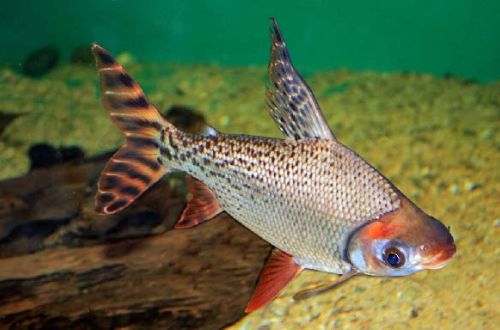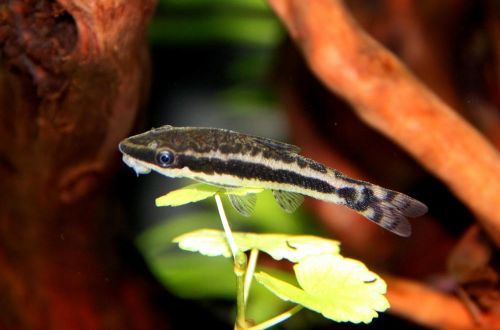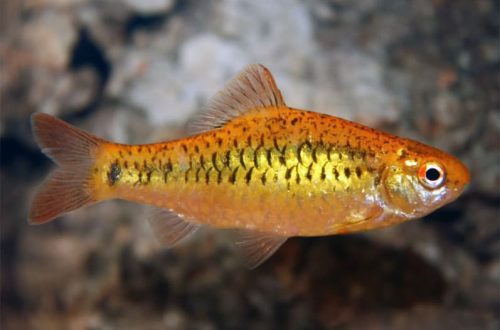
Haraki brazilian
The multi-stroke Semaprochilodus, also known as Brazilian Haraki, scientific name Semaprochilodus insignis, belongs to the Prochilodontidae (Prochilodontidae) family. In nature, it is widely distributed in various biotopes of the Amazon basin in South America from shallow floodplain lakes and wetlands of rivers to fast flowing forest streams.

Among the inhabitants of the region it is considered an important food fish. It is quite rare in aquariums, it is periodically supplied together with a related species, Semaprochilodus teniurus.
Contents
Description
Adult individuals reach a length of about 35 cm. The fish has a massive body with a large, somewhat flattened head. The body color is silvery with yellowish hues. The tail and anal fin are red with black horizontal stripes. Young fish have black specks on the tail part of the body, which disappear as they grow older.
A similar coloration is shown by the Semaprochilodus teniurus mentioned above, but it retains black specks in its adult state.
Brief information:
- The volume of the aquarium – from 500 liters.
- Temperature – 23-29°C
- Value pH — 6.0–8.0
- Water hardness – soft to medium hard (1-20 dH)
- Substrate type – any
- Lighting – subdued or moderate
- Brackish water – no
- Water movement – light or moderate
- The size of the fish is about 35 cm.
- Nutrition – foods with a high content of plant components
- Temperament – conditionally peaceful, there are intraspecific conflicts
- Keeping alone, in pairs and in the neighborhood with other species
Maintenance and care, arrangement of aquariums
A spacious aquarium is the key to successful maintenance. For a group of 3-4 fish, a tank of 500 liters is sufficient. Not picky about design. Decoration elements and their quantity are selected at the discretion of the aquarist. It is important to prevent overgrowth of plants and maintain open spaces for swimming. Due to the nature of the diet, tender plants are likely to be damaged.
In case of danger, Haraki Brazilian is able to jump out of the water for considerable distances, therefore, when in an aquarium, the presence of a cover becomes mandatory.
The diversity of natural biotopes determined the high adaptability of this species to various conditions. Fish can live in a fairly wide range of pH/dH and endure periods of dissolved oxygen deficiency.
Food
The basis of the daily diet should be feed with a high content of plant components. Eating exclusively live or frozen foods, as well as foods low in fiber, leads to digestive problems.
The optimal diet is considered to be a combination of popular dry foods (flakes, granules) in combination with pieces of blanched vegetables (cucumber, spinach, zucchini), lettuce, etc.
Behavior and Compatibility
In the limited space of the aquarium, the behavior of the Multi-streaked semaprochilodus differs markedly from its wild relatives. In a large tank with little population, Haraki behave peacefully even towards small species such as neons and rasboras. However, in small tanks and/or in large flocks, they begin to show intraspecific aggression, in which weaker individuals begin to be subjected to constant attacks.
Solitary or pair keeping with other species of comparable size is recommended.
Breeding / breeding
In nature, reproduction is preceded by a long migration, directly related to the alternation of the cycles of the rainy seasons in the Amazon. It is difficult to recreate such conditions in an artificial environment. For this reason, the Multistreaked Semaprochilodus is usually marketed by catching juveniles from rivers or from specialized fish farms.
Fish diseases
It is considered a hardy and unpretentious species. Most of the health problems are related to poor nutrition, wrong choice of neighbors and cramped conditions. In the latter case, the fish are often injured by forcefully bumping into the walls of the aquarium.
Read more about symptoms and treatments in the Aquarium Fish Diseases section.





